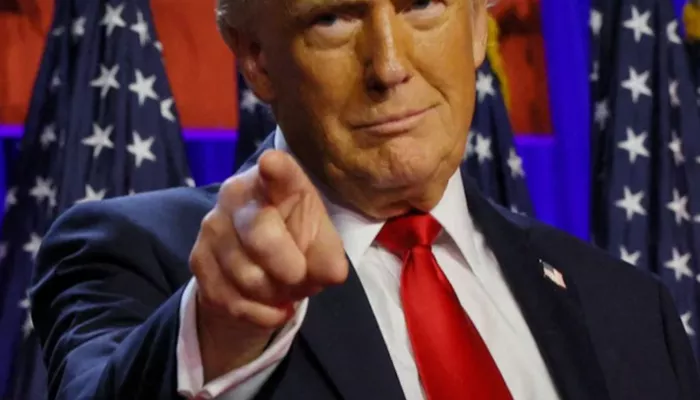President-elect Donald Trump threatened on Monday to impose a significant consumption tax on imported goods from three of the U.S.’s top trading partners, set to take effect on the day he assumes office. The move, announced via his Truth Social platform, would impact products from Mexico, Canada, and China, but Trump appeared to overlook the potential inflationary consequences of such a policy.
In a series of posts, Trump announced he would impose a 25% tariff on all Mexican and Canadian imports if both countries failed to address what he described as “unacceptable” levels of drugs and migrants entering the U.S. across their borders. He said the tariff would be one of his first executive orders upon taking office.
“On January 20th, as one of my many first Executive Orders, I will sign all necessary documents to charge Mexico and Canada a 25% Tariff on ALL products coming into the United States, and its ridiculous Open Borders,” Trump wrote.
However, Trump’s post incorrectly suggested that foreign governments bear the cost of tariffs. In reality, tariffs are import taxes paid by U.S. companies that bring foreign goods into the country. Those costs are typically passed on to American consumers in the form of higher prices.
The Trump-Vance transition team did not respond to a request for comment from The Independent on the potential impact these tariffs would have on U.S. consumers.
Trump continued to assert that the tariffs would remain in place until the flow of illegal drugs, particularly fentanyl, and migrants into the U.S. stops. “Both Mexico and Canada have the absolute right and power to easily solve this long simmering problem,” he said.
In a separate post, Trump also threatened to impose a 10% tariff on all imports from China, citing the country’s failure to meet promises to impose the death penalty on drug traffickers. He said this tariff would be in addition to any other existing tariffs.
“Until such time as they stop, we will be charging China an additional 10% Tariff, above any additional Tariffs, on all of their many products coming into the United States of America,” he wrote.
Should these tariffs be enacted, they could have a significant impact on the U.S. economy and global trade, potentially disrupting the U.S.-Mexico-Canada Agreement (USMCA), which Trump helped negotiate to replace NAFTA. In 2022, trade between the U.S., Canada, and Mexico was valued at approximately $1.8 trillion. Mexico is also a key partner in the U.S. auto industry, while Canada exported $439.6 billion worth of goods to the U.S. in 2023, and Mexico exported $452.29 billion in 2022, according to United Nations trade data.
China remains the U.S.’s largest source of imports, accounting for over 16% of all foreign goods brought into the country. These imports include finished products, as well as components and raw materials used in a wide range of U.S. industries. Additionally, China, Mexico, and Canada are the U.S.’s top three markets for agricultural exports, according to the U.S. Department of Agriculture.
Economists argue that these tariffs are unlikely to address the root causes of illegal drug trade in the U.S. Most fentanyl enters the country through legal ports of entry, often brought by U.S. citizens.
Trump’s proposal was met with support from some of his allies, though concerns over its broader economic impact remain.
Related topics:
- Maryland’s U Visa Act Supports Immigrant Victims of Violent Crimes
- Economy Experts Warn Deporting Immigrant Workers Could Damage the Economy
- Palestinian Canadians Decry ‘Betrayal’ Over Struggling Gaza Visa Program


